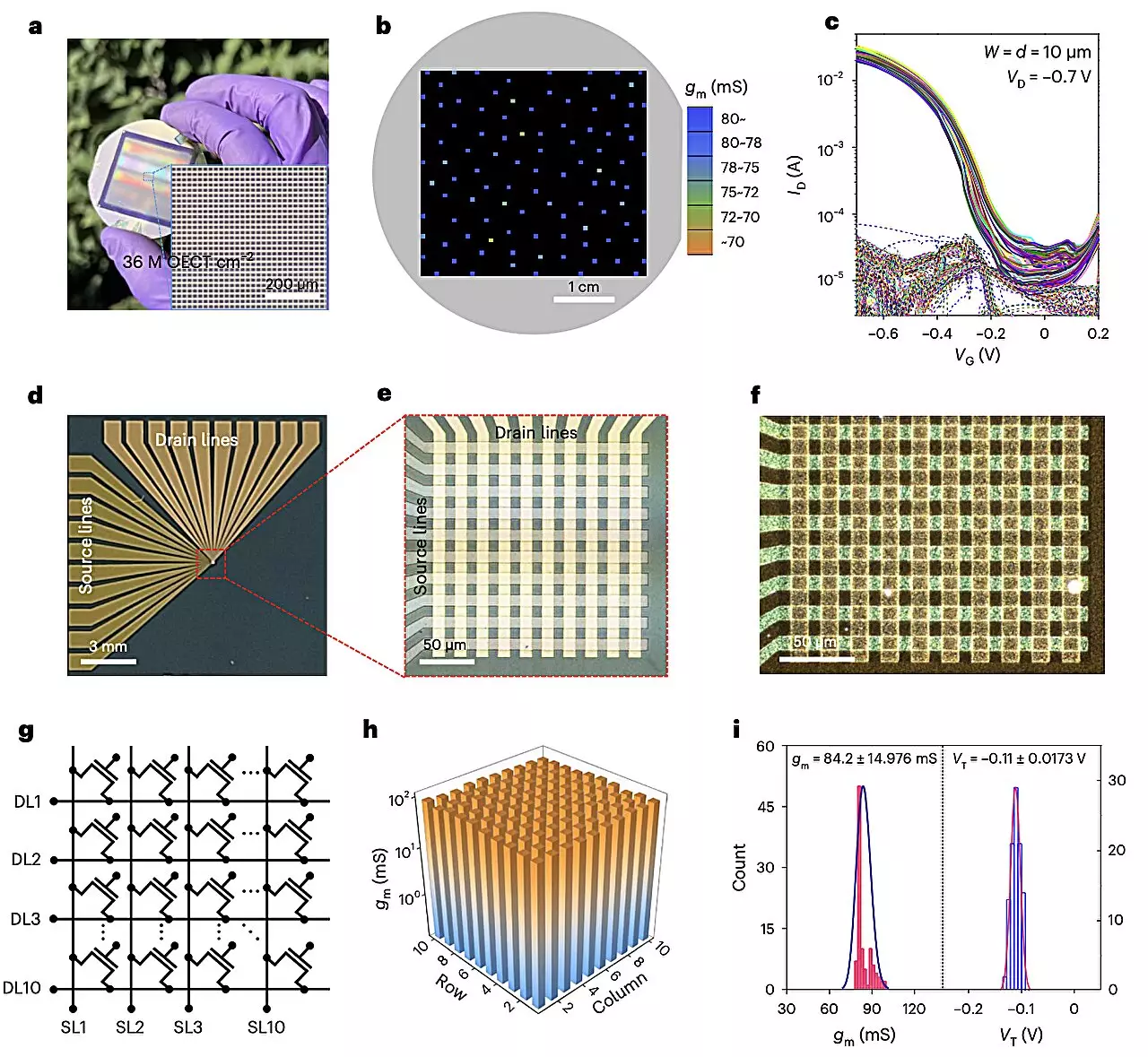Organic electrochemical transistors (OECTs) have shown great potential for various applications due to their ability to modulate electrical current in response to small changes in voltage. However, conventional OECTs have been limited by stability and slow redox processes. Researchers at Northwestern University have recently introduced a new fabrication strategy to address these limitations and improve the performance of OECTs.
In their study, Kim, Pankow, and their colleagues utilized electron beam lithography (eBL) to micropattern organic semiconductor films. This method allowed them to create high-density and mechanically flexible OECT arrays and circuits. By exposing the semiconductor films to a direct beam of electrons, they were able to produce ultra-small patterns without damaging the materials or affecting their conductivity. The resulting OECT arrays demonstrated transconductances of 0.08–1.7 S, transient times of less than 100 μs, and stable switching properties of over 100,000 cycles.
The eBL strategy not only enabled the fabrication of high-density OECT arrays but also facilitated the multilayer integration of OECT structures into circuits. The researchers were able to create vertically stacked logic circuits, including NOT, NAND, and NOR gates, which exhibited excellent performance and operational stability. This new fabrication strategy holds great promise for enhancing the stability and performance of OECT circuits in the future.
Potential Applications
The advancements made by Kim, Pankow, and their colleagues could pave the way for the development of biosensors, wearable devices, and neuromorphic systems based on OECT technology. The scalable fabrication enabled by the eBL strategy could also contribute to the integration of OECTs into a wide range of electronic devices. This recent study marks a significant breakthrough in the field of organic electronics and opens up new possibilities for the use of OECTs in various applications.
The research conducted by the team at Northwestern University has demonstrated the effectiveness of a new fabrication strategy for improving the performance of organic electrochemical transistors. By utilizing electron beam lithography, they were able to create high-density OECT arrays and circuits with enhanced stability and operational capabilities. The potential applications of this technology are vast, ranging from biosensors to wearable devices. Overall, this study represents a major advancement in the field of organic electronics and sets the stage for further innovations in the use of OECTs in electronic devices.


Leave a Reply